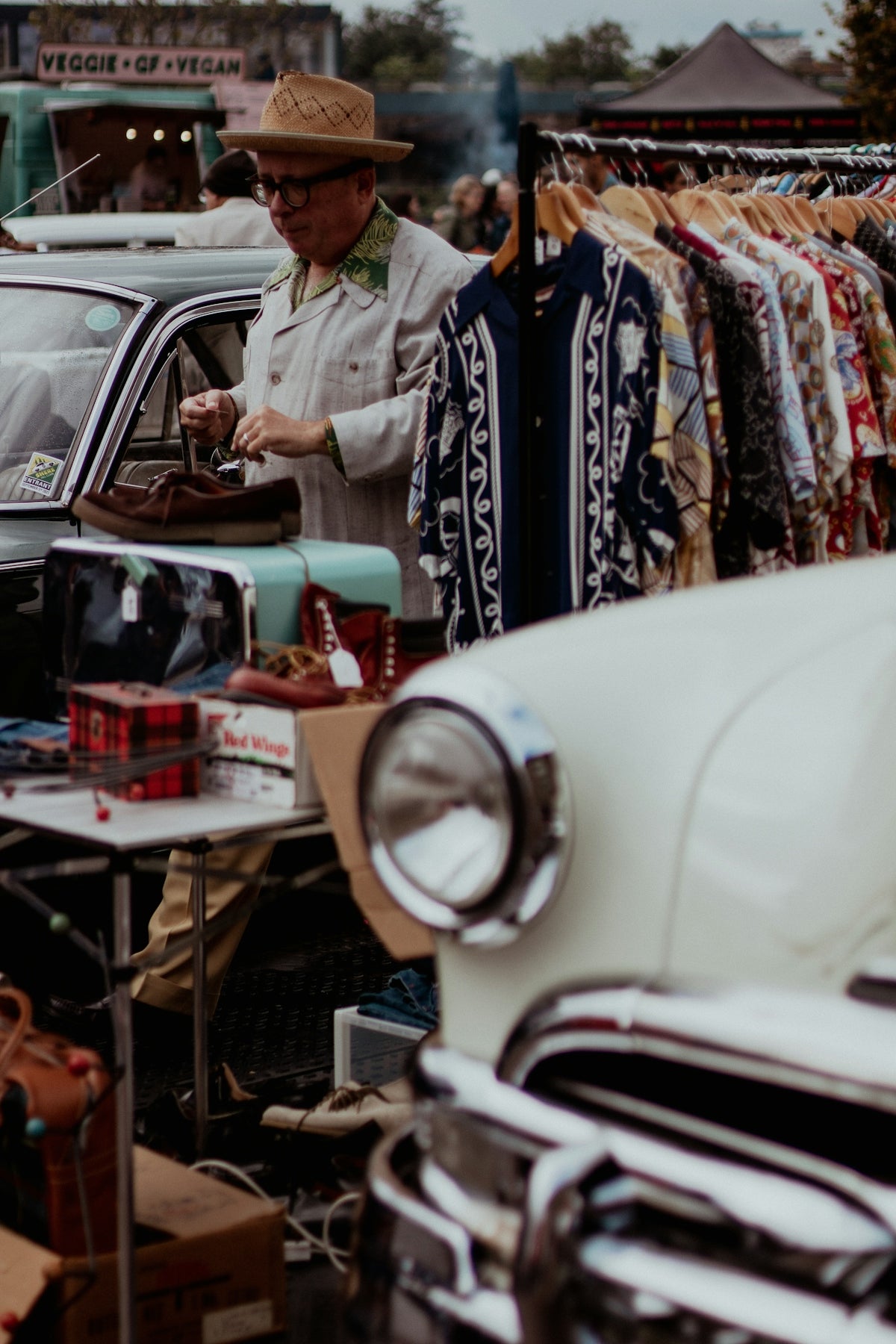The charm of vintage clothing lies in its unique and timeless appeal. However, managing vintage apparel requires a touch of skill and dedication to ensure these pieces remain in excellent condition. In this blog post, we will explore practical techniques to repair and retrofit vintage garments, breathing new life into them, while maintaining their charm and character.
Understanding Your Vintage Fabric
Before diving into repair techniques, it's crucial to understand the type of fabric you're dealing with. Most vintage items are made from natural materials such as cotton, wool, and silk. Other garments may feature synthetic fabrics like nylon or polyester, which became prevalent in the mid-20th century. Each material requires specific care:
- Cotton and Wool: These natural fibers can be delicate over time and may require gentle washing and careful handling during repairs.
- Silk: Extremely delicate and prone to damage if not handled with care. Dry cleaning is often the safest cleaning method.
- Synthetic Fabrics: Usually more durable but can melt under high heat, so use a low-heat setting for ironing or avoid it altogether.
Spend time understanding the fabric composition to guide your laundering and repair methods, ensuring you don’t inadvertently damage your prized vintage pieces.
Essential Tools for Vintage Repair
Before tackling any repairs, ensure you have the necessary tools. Some essentials for vintage apparel repair and retrofit include:
- Needles and Threads: Use a variety of needle sizes to handle different fabric types. Choose threads that match the fabric in both color and texture.
- Fabric Scissors and Seam Rippers: Ensure sharp blades to prevent fraying and accurately undo old stitches.
- Sewing Machine: A reliable machine can make extensive repairs more manageable, but hand-sewing skills are invaluable for intricate tasks.
- Patching Materials: Keep a stock of similar fabric scraps to patch holes and tears discreetly.
- Buttons and Zippers: Vintage-style replacements can often be found at specialty stores or online. Replacing these elements restores functionality without compromising the garment’s aesthetic.
By ensuring you have these tools on hand, you'll be well-prepared for any repair task that comes your way.
Repair Techniques for Common Issues
1. Patching Holes and Tears
The first step in patching a hole is to reinforce the fabric around it. By cutting a fabric patch slightly larger than the hole, you can secure it with an overlock stitch around the edges. For more subtle repairs, consider using patches of invisible appliqué for an "inside-out" repair.
2. Replacing Buttons and Zippers
Missing buttons and faulty zippers are common issues with vintage clothing. Finding period-appropriate replacements can enhance the garment's classic aesthetic. When replacing buttons, consider products like the Camel Flower Slouchy Sweater available at Fashion Fitz, featuring elegant floral patterns that complement a vintage style.
3. Fixing Hemlines and Seams
Frayed or unraveling hemlines and seams can spoil the clean lines of a vintage dress or skirt. Use a blind hem stitch to recreate the original style, or try a decorative stitch for an added design element. If sewing by hand, use small, even stitches to keep the appearance neat and authentic.
Retrofit Ideas for Vintage Apparel
Retrofitting vintage clothing involves updating a piece to improve its fit or style while preserving its original charm. Here are some ideas:
1. Adding Modern Flair to Sweaters
Vintage sweaters can be transformed with contemporary accents. Take inspiration from the Bright Green Floral Bubble Short Sleeve Sweater, which combines the vibrancy of modern fashion with classic comfort. Add ribbon or lace trim to sleeves and collars, or incorporate contrasting buttons for a customized look.
2. Transforming Dresses into Two-Piece Outfits
Turn a vintage dress into a versatile two-piece set by separating the top from the skirt. This not only revitalizes an old piece but also provides more combinations for wearing. Pay attention to maintaining clean lines and use matching or complementing materials to rehem the new edges.
3. Changing Necklines or Sleeves
Updating the neckline or sleeves can significantly alter the appearance of a vintage garment. Remove the collar or alter the neckline to a V-shape for a modern touch. If your piece features a long sleeve, try varying the length to short or cap, reminiscent of the detailing found in the Flower Pattern Slouchy Sweater.
Caring for Retrofitted Vintage Apparel
Once you have repaired or retrofitted your vintage clothing, maintaining their condition is paramount. Always follow these care tips:
- Hand Washing vs. Dry Cleaning: Hand washing in cold water with mild detergent is best for most vintage garments. Consult with specialized dry cleaners for delicate items like silk or heavily embellished clothes.
- Storage Solutions: Store your vintage clothing in a cool, dark area. Use padded hangers for blouses and dresses to prevent stretching. Fold heavier items and use breathable garment bags for protection.
- Seasonal Inspection: Regularly check on your garments, especially if they aren't frequently worn, to catch any issues like mildew or pest damage early on.
Conclusion
Repairing and retrofitting vintage apparel allows you to enjoy beautiful, timeless pieces while expressing unique fashion creativity. By investing time and effort into these techniques, you preserve the charm of vintage clothing and continue their legacy by integrating modern styles. Visit Fashion Fitz for inspiration and materials to complement your crafting endeavors.
Whether it's reviving a nearly century-old accessory or updating a mid-century dress, the art of repair and retrofit transforms vintage wear into something yet again cherished. With a little patience and creativity, your wardrobe will become a testament to personal style — and to the timeless appeal of vintage apparel.




0 comments